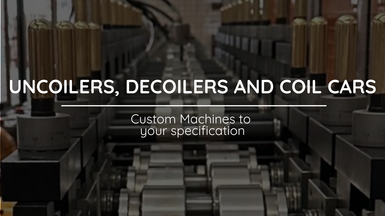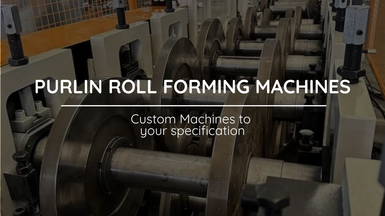
Roll Forming vs. Competing Processes: Making an Informed Choice For Your Business
Roll forming is a process that involves gradually bending metal coils or sheets through a series of rollers to create precise profiles.
Posted on Tuesday, September 12, 2023
In the world of metal manufacturing, selecting the proper process can significantly impact production quality, efficiency, and overall cost-effectiveness. Commonly-compared methods against roll forming include competing processes such as stamping, extrusion, and press braking. Let's delve into the pros and cons of each technique to help you make an informed decision for your specific manufacturing needs.
Roll Forming: Precision and Versatility
Roll forming is a process that involves gradually bending metal coils or sheets through a series of rollers to create precise profiles. This method is known for its precision, consistency, and versatility. Here's how roll forming stacks up against competing processes:
Advantages of Roll Forming:
Complex Profiles: Roll forming excels in creating intricate and complex profiles. The process's adjustable rollers and automated precision make it suitable for many different shapes and designs.
Consistency and Quality: Roll forming's automated nature ensures consistent quality across all produced profiles. The accuracy of the process minimizes variations and defects, resulting in reliable and high-quality end products.
Material Efficiency: Roll forming generates minimal waste compared to approaches like stamping. The continuous bending process ensures optimal material usage, contributing to cost savings and sustainability.
Cost Savings: While the initial investment in tooling may be higher, roll forming's efficiency, material optimization, and consistent quality lead to long-term cost savings.
Quick Setup and Changeovers: Once initial tooling is established, changing between different profiles is relatively quick and straightforward, reducing downtime and production delays.
Competing Processes: Stamping, Extrusion, and Press Braking.
While roll forming offers numerous advantages, let's compare it to some competing processes:
Stamping:
Stamping involves using dies to cut or shape metal sheets into specific forms. It's suitable for high-volume production of simple shapes. However, it may be less effective for complex profiles due to tooling limitations and higher material waste.
Extrusion:
Extrusion pushes metal through a die to create continuous cross-sectional profiles. It's ideal for producing linear shapes like tubes and channels. Extrusion may face challenges when creating intricate shapes and may not achieve the same precision as roll forming.
Press Braking:
Press braking involves bending metal using a press brake machine. It's effective for sharp bends but may not suit profiles that require gradual or multiple bends. Manual operations can introduce variations in quality.
Choosing the Right Process
The decision between roll forming and competing processes depends on several factors:
- Profile Complexity: Roll forming is superior for complex shapes, while simpler profiles might be suitable for stamping or extrusion.
- Customization: Roll forming's adjustability makes it a better choice if you require unique profiles.
- Volume: For high-volume production of simple profiles, processes like stamping might be cost-effective. Roll forming is advantageous for complex profiles or lower volumes.
- Material Waste: Roll forming's minimal waste is beneficial from both a cost and sustainability perspective.
- Quality Consistency: If maintaining consistent quality is a priority, roll forming's automated precision provides an edge.
Roll forming offers a unique combination of precision, versatility, and efficiency that distinguishes it from competing processes. While each approach has its strengths, roll forming shines in creating complex profiles with consistent quality and minimal material waste. By carefully considering your production requirements and priorities, you can select the process that aligns with your goals, ensuring optimal results for your metal manufacturing projects.
Roll Forming Machines LLC's New Factory
Posted on Sunday, March 23, 2025
We have relocated factories, which will be available for tours very soon.

Uncoiler, Decoiler and Coil Car Roll Forming Machine Accesories from Roll Forming Machines LLC
Posted on Sunday, November 24, 2024
Contact us today with your specifications for a custom Uncoiler, Decoiler or Coil Car at [email protected] or call us at (+1) (407) 859 1119

Stud and Track Roll Forming Machines from Roll Forming Machines LLC
Posted on Saturday, November 23, 2024
Contact us today with your specifications for a custom Stud and Track Machine at [email protected] or call us at (+1) (407) 859 1119

Cee and Zee Purlin Roll Forming Machines from Roll Forming Machines LLC
Posted on Saturday, November 23, 2024
Contact us today with your specifications for a custom Cee and Zee Purlin Machine at [email protected] or call us at (+1) (407) 859 1119